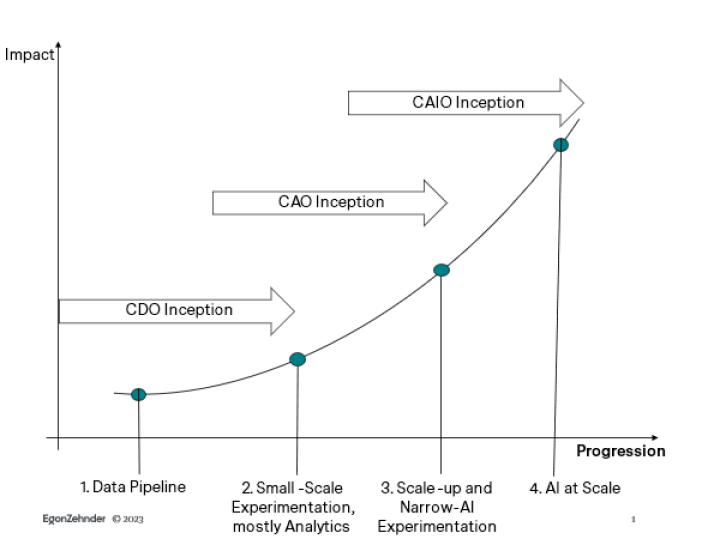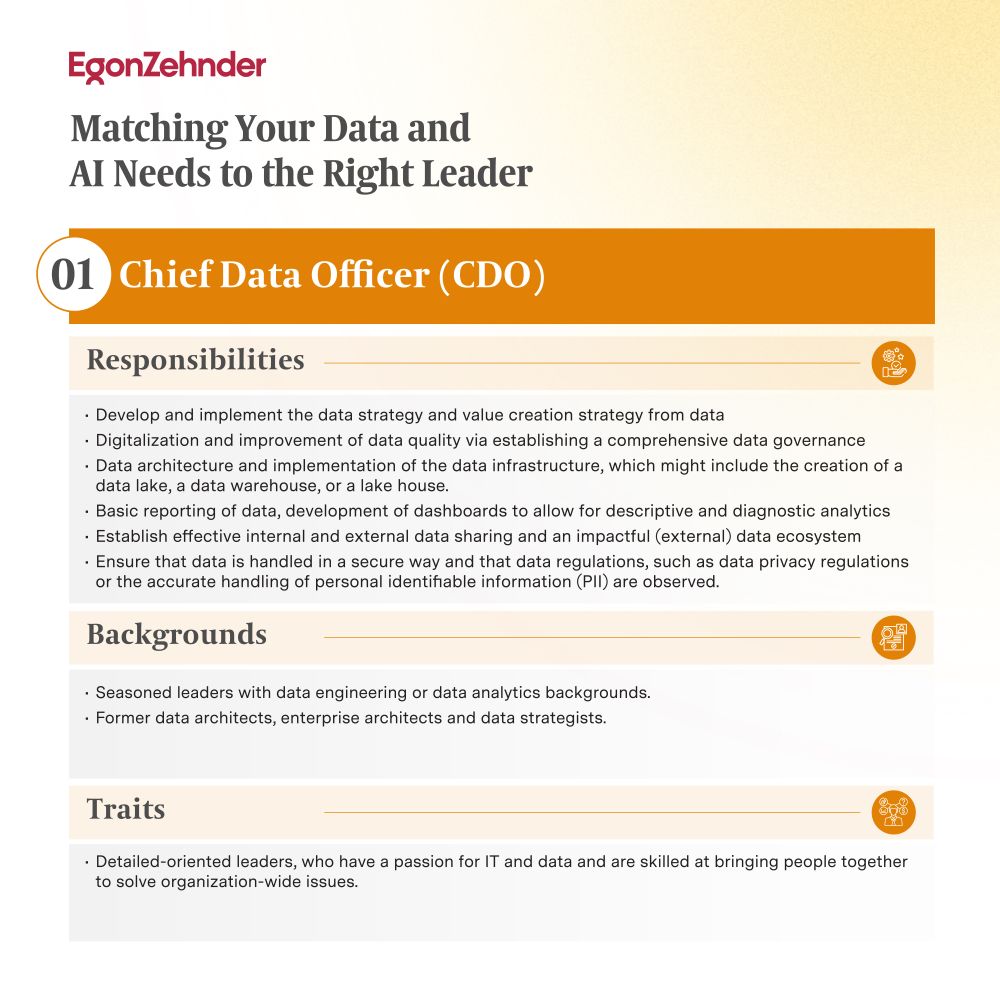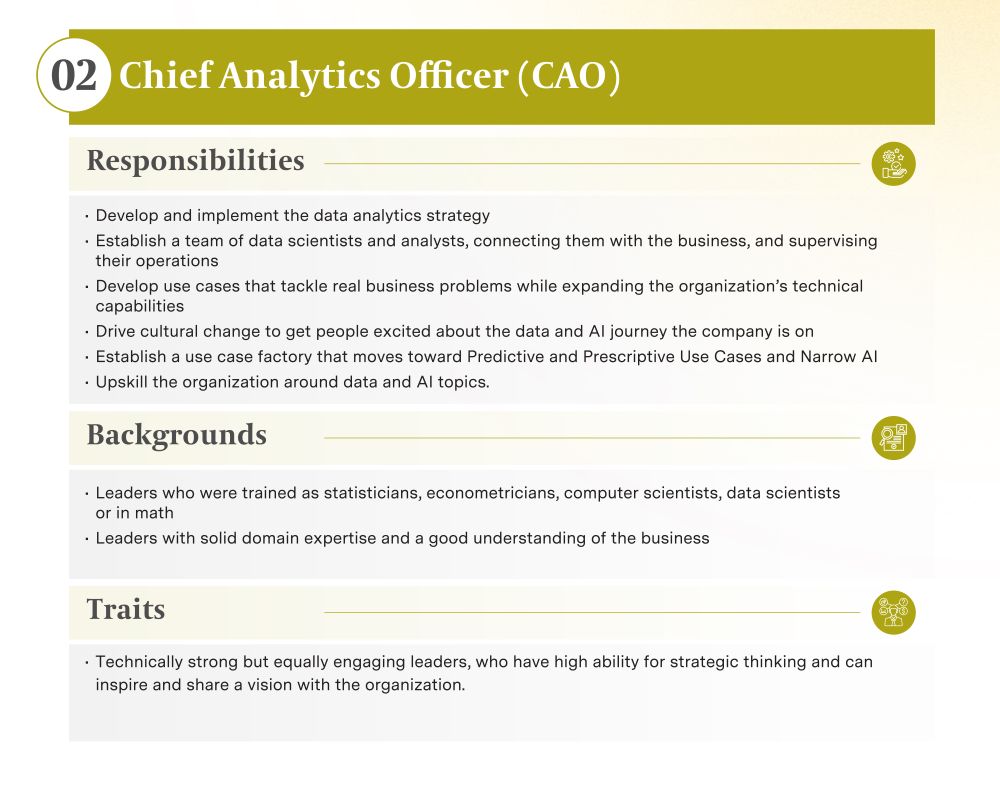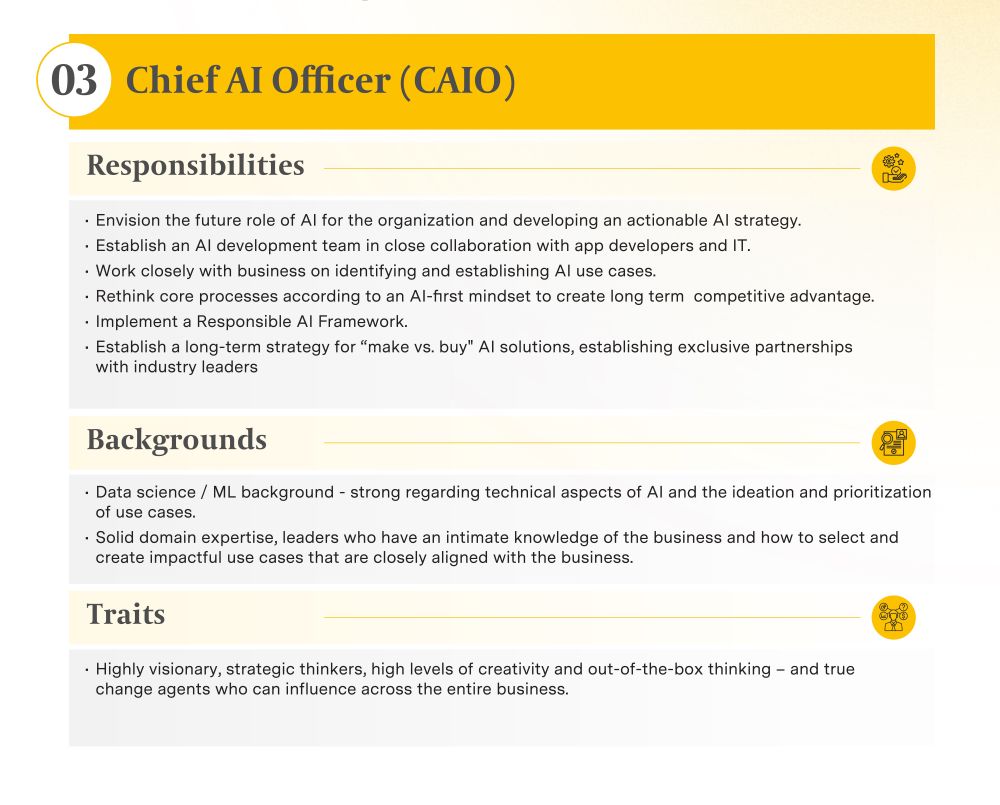These days, everybody talks about fast-growing ChatGPT (which garnered 100 million users in just 60 days), Generative AI, and the tremendous progress we have seen in AI research and development. Both individuals and corporations are experimenting with Generative AI use cases, strategizing about the ways to harness its capabilities.
But AI is not a new topic – many of the algorithms that are being used have been around for decades. Many of us have engaged with AI for years, such as image recognition (e.g., your car reading speed limit signs), voice recognition (e.g., talking to Alexa or Siri), recommendation engines (e.g., Netflix suggesting the next movie to watch), autonomous motions (e.g., a car that can hold speeds, distance to the car in front, and stay in lane) or knowledge management (e.g., algorithm identifying content in vast amount of unstructured data). All these examples describe AI use cases, but they belong to “Narrow AI," where a specific, narrow, task is being solved by AI. In comparison, the more general intelligence that AI developers are striving for is called "Artificial General Intelligence" (AGI). With the coming of Large Language Models (LLMs), such as ChatGPT, some believe that those developments show "sparks of AGI," which is a huge milestone – one that creates a lot of emotions, such as excitement about the possibilities but also fear about a super-intelligent AI that might do more harm than good.
Companies have been scrambling to react to this rapid development. Many are nervous about several aspects:
- Fears of Falling Behind: Many companies worry that their competitors might be further along in the journey, leading to a potential loss in market share.
- Disruption of Business Models: The apprehension of AI completely disrupting their business models and value chains.
- Impact on Workforce: The fear that AI “automates away” large amounts of manual work and might make large shares of the workforce obsolete (the World Economic Forum released an interesting report earlier this year about their expectations that lower-skilled work will become obsolete but that the overall net impact of AI will remain positive).
The threats of AI-related disruption aren’t a surprise but the possibilities of Generative AI and use cases that are based on leveraging unstructured data have been impressive to many. A number of organizations have already been preparing for AI over the last decade or so. Depending on the industry they are in, the overall pressure to reinvent, and the amounts of investments they have already made, these organizations are at varying stages in their data and AI journeys.
- Focus on the Data Pipeline: Many companies are still in the process of digitizing their records, implementing data governance to improve data quality, and creating fitting data infrastructures and data architectures.
- Small-Scale Experimentation: Some organizations are leveraging structured data and are experimenting with (mostly) descriptive and diagnostic analytics use cases, often limited to the creation of dashboards and high-level data summaries.
- Scale-Up and Narrow-AI Experimentation: Other companies have already scaled up some of their experimental use cases and are moving toward more advanced analytics, which includes predictive and prescriptive algorithms. Many of these use cases can be considered Narrow AI and they are predicting and optimizing operational outcomes, automating manual processes, improving customer experience, and providing new revenue streams.
- AI at Scale: Very few companies are truly leveraging AI at scale. These are often tech companies and digital natives. Firms that started their business with a clean sheet and good data quality. These are the companies that can already reap the benefits of AI in their business models.
Now the question is whether a Chief AI Officer (CAIO) can steer an organization in the right direction and move it toward true AI leadership?
The answer is that it depends. It depends on the company's data maturity and on where in the evolution the company is situated. In a less digitalized industry and a company where data maturity is still limited, a CAIO might not be the right fit (yet). A more traditional Chief Data Officer (CDO) or a Chief Analytics Officer (CAO) might be better choices. A CDO would focus on the data infrastructure, and the data governance to ultimately create and maintain a winning data pipeline. A CAO would be the right role for a company where data analytics (both descriptive and advanced analytics) are front and center of the transformation.
Hiring a CAIO when the company is still in the earlier stages of its data maturity curve could be detrimental to accelerating AI adoption for several reasons:
Each phase of the data maturity curve requires experts who are able to solve the key challenges. If the key challenge is that the data pipeline has not been established yet, a CAIO will most often be less qualified to develop a solution than a CDO is. If the key challenge is to experiment with and scale the analytics function, a CAO might be the best-suited person.
The following descriptions summarize the responsibilities of these roles and the typical backgrounds and traits of the people who fill them.
A comprehensive assessment of a company’s current and aspired states along the maturity curve above should be the first step when embarking on the journey toward effective AI adoption. We at Egon Zehnder are guiding our clients in this process, which includes stakeholder interviews, data maturity assessments, and workshops that align the organization with the current and desired states.
The last question is: What lies ahead for the CAIO role after it has successfully implemented the required business and cultural transformation, priming the company to reap AI benefits across its operations and go-to-market? We believe that the CAIO should be considered a top contender for CEO succession and that in truly mature, AI-first companies, it will be the Chief Executive’s job to ensure that AI continues to be developed across functions and business units. Naturally, a CEO can only have a limited number of direct reports but if AI is (or will) become the core of the business, having the CAIO report directly to the CEO makes a lot of sense. Equipped with a transversal view of the organization, a successful CAIO can transition to a more strategic role, acting as a magnet for other AI-savvy executives in the C-suite, demanding that an AI vision is a prerequisite for all managerial positions.
Topics Related to this Article









